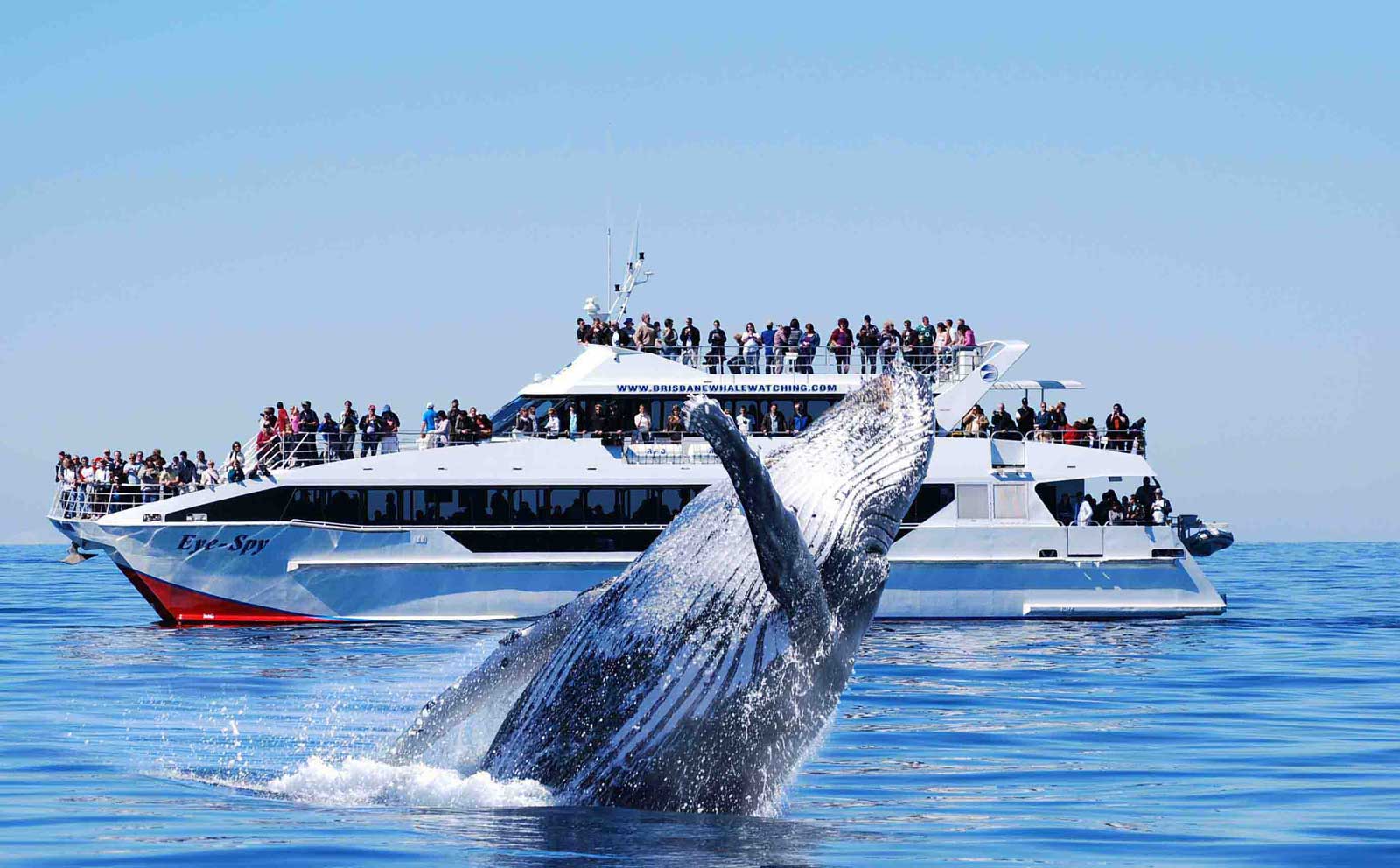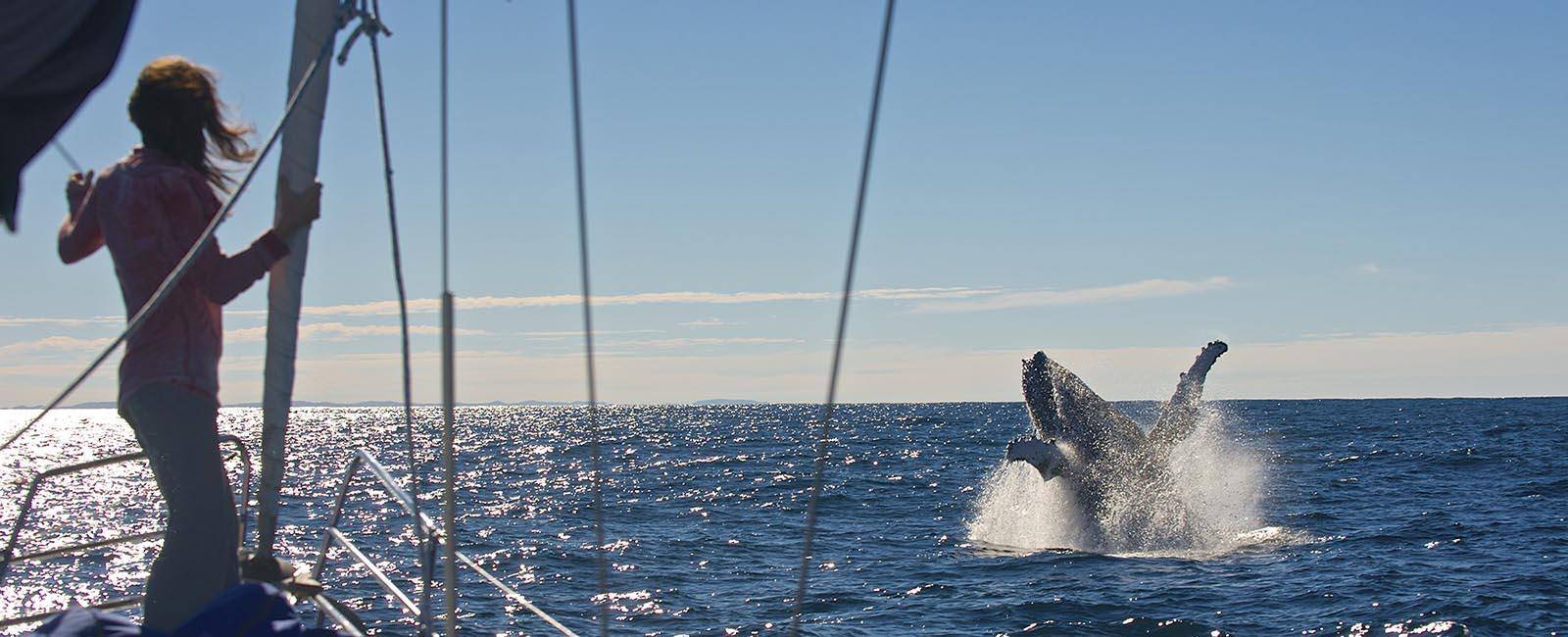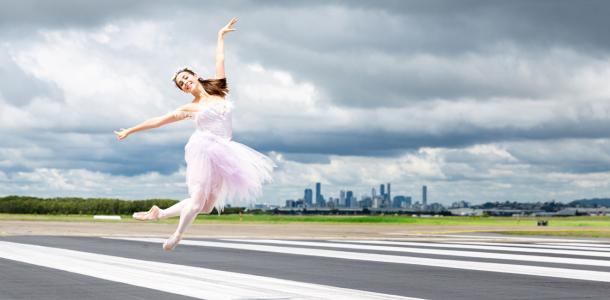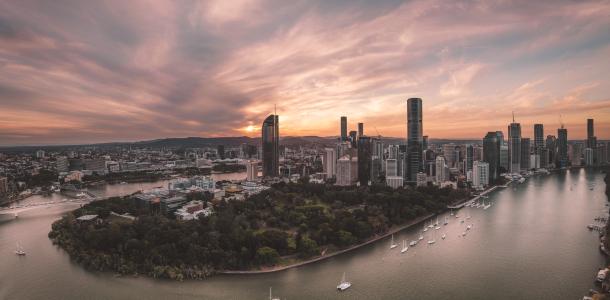
After my first experience whale watching I have just two tips for would-be whale watchers.
1. Scope out the best spot on the boat and put first dibs on it before anyone else even thinks about it.
And 2. Always listen to the skipper and crew. Their expertise is unparalleled, and it is their job to make sure you are in the right spot at the right time. Use their ‘Spidey’ senses to your advantage.
These are just two things I learned after a day aboard, on a mission to watch humpback whales during their annual migration from Antarctica to Tropical North Queensland and back again. There is much more we can learn watching whales, and these are the best places to do just that near Brisbane.
Brisbane Whale Watching
I can see how Kerry Lopez hasn’t lost her passion for whale watching even after more than 20 years skippering tours aboard the MV Eye Spy. Captain Kerry had the luxury catamaran built to her specifications and launched her tours from the Redcliffe Peninsula. The multi-million dollar MV Eye Spy carries an average 200 people per cruise and its five-star facilities throughout, with wide walk decks and floor to ceiling windows for indoor viewing from the air-conditioned passenger cabin. It’s also child and wheelchair friendly.
Sometimes the MV Eye Spy calls in help from its ‘Sky Spy’ a small Piper plane which spots whales from the air and provides the location to minimise transit time to the sighting ground.
Tangalooma Whale Watch Cruises
Departing from Pinkenba, Tangalooma Island Resort’s Whale Watching Cruise is the closest tour option departing from Brisbane. In addition to the classic whale watching cruise you can also upgrade your tour to include Tangalooma’s iconic dolphin feeding experience or an overnight stay on Moreton Island (or even longer if you’re so inclined).
North Stradbroke Island
However, during the migration season you can also see whales without even leaving land. On North Stradbroke Island several accommodation venues have their own whale watching towers and at French Ease café at Point Lookout tables on the deck face the ocean! Or take the Gorge Walk around the northern end of Point Lookout for more spectacular views out to sea. Several accommodation venues also have their own whale watching towers so don’t forget to pack binoculars.
GETTING THERE
THINGS TO KNOW
- The humpback whale watching season for Brisbane is around July to November every year.
- During their annual migration, humpback whales will cover 5,000km from Antarctica past Brisbane’s North Stradbroke and Moreton Island’s to Tropical North Queensland and back again.




